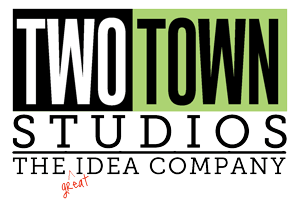Snippets Spring 2014
Everybody had an opinion. The biggest surprise to me, however, was how markedly different many of the viewpoints are. No single comment necessarily defines the direction of the business, and some directly conflict with each other, of course even in the best of times there will be radically different perspectives among people holding essentially identical positions in the industry. But it’s clear things are happening out there. We are hearing about product hits and company cutbacks in the same day. The need for new licensed art and the decision to go in-house, both coming from companies that are direct competitors. So the question is: What’s the take-away from all this?
Let me know when you figure it out.
“We really don’t want to look through an artist’s entire portfolio, we want them to send us some of their art made into our products.” – a creative director
“They have been making the same stuff for going on 15 years now and it’s starting to fade away.” – a sales manager about the company
“Cheap sells. It has to be good but it can’t be expensive.” – owner of a gift company
“People don’t want icons now, no central themes, it’s more of a simple look built from texture and color, maybe with some vintage materials.”- an art director
“It’s definitely not just us, there has been a softening industry wide.”– a sales manager
“We have to be really, really sold on the concept. Have to be, or we cannot make the investment.”– owner of a gift company
“Our showroom bill is 15 thousand, plus thousands more in travel, hotels, shipping and personnel expenses – then we write only three decent orders during the first three days we’re open? How is that worth it?”- a marketing director at the Dallas show
“I hate all this inspirational crap. You are going to get your life’s meaning from a saying on a coaster? Get real.”– a manufacturer (who sells some inspirational crap)
“Why would I pay out 7 or 8 thousand dollars to meet with someone who wants to do a 3 dollar notecard line with me?”- an artist explaining why she no longer does SURTEX
“The last 6 months have been terrible. I really don’t know where the future of the gift industry is going to be, people are offloading all their clutter because their kids don’t have any interest in it either.”– a sales rep
“We loved it but apparently it’s too perfect, we think we need to “rough” it up a bit to get it to sell”.– a mfr about a (beautiful!) product line
“I can only take so much Christmas before I go cuckoo!”– a retailer overheard in the hallway
“The owners of the mom and pop gift stores are aging out of the business, and when they can’t sell the stores they are closing them down. We have lost 600 in the last 3 years – that’s 3 to 4 a week off the books.”– owner of a gift company
“This kind of stuff we can do in-house; we pay royalties for unique work we don’t do in-house.”– an art director
“Tiny little attention spans – that’s the biggest problem with our industry now. ”– an agent
“I get it, but the people we sell to, the shop owners, they are mostly older women and they will NOT get it. So they won’t buy it.”– a mfr about a social media based line
“I could be interested as long as it’s not being sold at WalMart.”– a retailer to a rep in a showroom
“She’s not here this time, she got a real job.”– overheard in a showroom
Rep: “Can I show you the new (famous artist name) products?”
Retailer: “Uh, yeah… not really, we’re kinda over (famous artist name).” – overheard in a showroom
“We like the way her mind works.”- art director about a favorite artist
“We had 400 skus to work with and corporate has chopped that in half, so we have had to make some tough choices about what goes forward.”– a sales manager about line reductions
“No figures. People do not sell for us.”– a manufacturer about a collection
“It’s OK. Traffic is a little light but maybe that will pick up. Sales are up a little but there does not seem to be any buzz in the market. It’s just… OK.”– a showroom rep in ATL
“Nothing is a real trend right now, so we have to do everything to see what works.”– a gift manufacturer
Ronnie: “How’s the show going?”
Rep: “Well, I wouldn’t call it an unmitigated disaster…”
Ronnie: “So, it’s a mitigated one?”
Rep: “Sure, let’s go with that.”
“Yeah, everybody wants new – right up until they get it.”– an art director
“We tried some of her stuff and it didn’t sell well enough to reorder, so anything new will really have to knock our socks off.”– owner of a gift company
“It can’t be too complicated for the retailer to sell, they don’t have the time or the personnel to explain things to their customers.”– owner of a gift company
“The question is: what are we going to put in the window next time that will bring people in? THAT is what we are searching for.”– a licensing director
